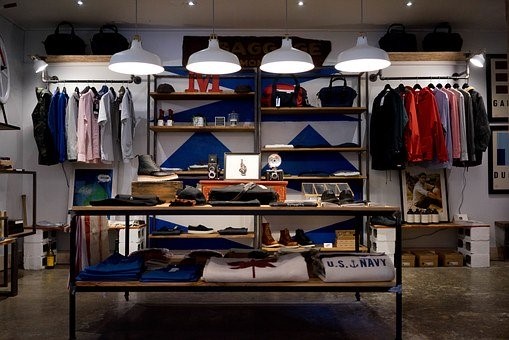These days, brands need to employ a solid strategy to secure an ample flow of footfall in their physical stores. This is mainly due to the fact that many customers have abandoned the historic weekend saunter down the high street in favour of convenient, online alternatives.
Current marketing strategies must account for this change, and one of the challenges facing those at the helm of some of the retailers that we know and love, is how to regain offline market appeal. So, how are they achieving this? Together with Where The Trade Buys, specialists in book printing, let’s take a look.
Exploring the buying experience
A recent study found that 75% of consumers said they would be more likely to buy from a brand which recognizes them by name, or that recommends them products based on previous purchases. Analytics can provide customer information which assists with personalisation, and this is key to building brand loyalty. The iconic jeweler Tiffany and Co. brought a breath of fresh air to the opening of their Covent Garden store, creating a ‘Style Studio’ where they sell more than just their luxury jewels. Homeware and accessories have been added to the range, to give the brand a better positioning in the everyday life of their customers, found within the exquisite on brand studio, finished in the company’s classic duck egg blue. Further features such as a personalisation station called #MakeItTiffany where customers can get jewellery items engraved. The aesthetic of the store also targets the Instagram generation of younger shoppers, and the store is an experience within itself.
Revitalising the offline booking experience
The travel retail industry has taken a notable hit in recent years, as the age-old tradition of visiting a high street agent has become a thing of the past. With companies such as Airbnb and a plethora of agents taking their businesses online, physical travel agents have had to think of innovative ways to retain the holiday booking experience as an offline task. Virgin Holidays have taken this on board and created a string of concept stores to revitalise the booking experience. The stores include mocked up airplane cabins and virtual reality technologies to take customers on a simulated tour of a destination. By playing on sensory features, Virgin are capitalising on the ‘real’ elements which are far harder for digital to replicate. They have essentially gone back to basics, providing a friendly, visual experience in order to help trigger conversions. This exemplifies the fact that certain personalisation methods in retail are exclusive to the offline space, and 22% of younger and older families still book their holiday in store which proves the value.
A balance between offline and online
Shops may all be flocking to digital platforms, but some are choosing to buck the trend and take their personalised services back to where it all began. Before the age of department stores and supermarkets, stores were small and independent, which made for strong rapports with customers. However, the emergence of large, modern stores made shopping a far less sociable activity. When online furniture and homeware retailer Made.com decided to take a leap of faith and open a physical store, they kept this concept at the heart of their plans. The recently relaunched Soho London showroom captured the best of both worlds, from QR codes to assist in locating products to staff lead workshops for customers to attend. By doing so, they struck the perfect balance between the offline and online world.
Creating a tailored shopping experience for your customers
Much personalisation comes from purely knowing your customers, and companies such as Joules offer targeted discounts to coincide with sales and shopping events, including Black Friday. By providing the relevant discounts, customers are more likely to feel drawn towards a purchase as the offer is based on their previous buying habits with the brand. Urban Outfitters use their reward scheme to dish out points to shoppers, even just by paying a visit to the store. Incentives like these can provide the fuel for a conversion, as well as a trip to the shops. Many stores offer memberships or points cards, which offer regular treats or an annual vouchers provide the motivation for a purchase, as simple as it might sound!
Overall, retailers are rejuvenating their approaches to retail, with a new degree of personalisation. Human elements are the most difficult to replicate online, therefore retail is effectively playing to its own advantage by boosting the presence of personalisation by creating a shopping experience which is tailored to the customer.





















